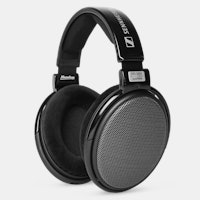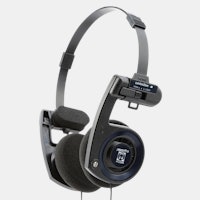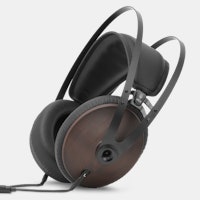Click to view our Accessibility Statement or contact us with accessibility-related questions























How Much Amplifier Power Do I Need?

search
close
Sort by: Newest
keyboard_arrow_downgeddy76
12
Apr 12, 2023
Not all power is the same. My Cambridge CXA60 has the same power output (60w) as my Lyngdorf TDAI-1120. However the Cambridge just doesn't have enough grunt to awaken the sub (below 40hz) frequencies as the little Lyngdorf (as tested on my Tannoy XT6f speakers @~90.5dB SPL). So average volume levels is one thing, but overall frequency volumes is not the same. Of course, no pair of speakers are the same. So, in the end, make a sensible estimation and go with the amp you prefer.

Evshrug
4130
Keyboard Club Member
Apr 16, 2023
geddy76Agreed, make a sensible estimation.
A speaker’s specification may list the required voltage or required wattage to reach a target decibel, but crucially, it only states that at 1 kHz, the power required at ONE frequency! Sometimes, the impedance of a speaker varies across the frequency spectrum. While the amp does apply a uniform voltage across all frequencies, the amp will need to be able to deliver enough current to reach the total wattage needed to have the same (or less/more) decibel output as the midtone 1 kHz frequency, and when the speaker’s impedance goes down, the requirement for current goes up!
Here’s an amp designer from PS Audio who explains this better than me:
https://youtu.be/qfNoGVahHKg
I am not an amp designer, so I need to do more research but apart from nonlinear impedance (some speakers and headphones DO have linear impedance, actually), I believe that the power demands change based on frequency regardless. To me, it seems logical that the need to rapidly change directions for higher and higher pitched frequencies would require more and more power to fight inertia, but I’ve seen others say that lower and lower bass notes require more and more power to create the needed distance of excursion away and towards the permanent magnet in each speaker/headphone driver. I wish I knew for sure, but I think I can find out quickly, once I’m done doing my own taxes 😅
(I’ve been procrastinating my taxes by researching audio, but I’m definitely going to get my taxes done on time! Schedule is clear tomorrow of anything but eating and taxes!)
WilliamJeremiah
0
Nov 2, 2021
I agree with Warmouth. As long as you're there listening, you're always better off with more power than you need.
Whether the same amount of power is used is only relative between two identical driver/cabinet configurations.
A professional audio subwoofer cabinet driven with what a typical home theater sub cabinet requires isn't going to work out. A transducer structure capable of handling two thousand watts pink (continuously) isn't going to function properly with a mere couple hundred.
Power is heat. Speaker ratings are there to prevent meltdown and/or self destruction.
Rms is relative to continuous (pink noise) and Peak is relative to dynamic levels (music).
I like to hit the upper quarter of Peak or Rms and half again, when matching power to speakers.
Damage is more likely to occur during clipping when underpowering than it is when more than enough power is available and clipping is avoided.

SuperFlyEDSguy
62
Oct 29, 2021
Phenomenal summary!
Though you’ll never get a bunch of audiophiles to agree on every point (correct or not), I do believe that you did a fantastic job concisely and objectively presenting a fairly complex paradigm in terms that everyone will understand.
Kudos! 👏👏👏

SuperFlyEDSguy
62
Nov 12, 2021
I just now checked it out (2 weeks later) as I saved it in my ‘Reading List’ until I could find a good time to read it. From a technical perspective, it shines, objective as hell, and surely a 10/10! Your product designs are amazing as well! Do you have an EE background? I even saved a copy of the article to a folder that I keep my amp resources in as it makes a great ‘go to’ document for when you really just need the numbers and no added fillers. 😆
Here’s my very few criticisms:
— You write well and concise. You really need to include buttons or some method to “Print,” “Save as PDF,” “Share,” etc. I liked the article enough that I copied it into Word and manually cleaned-up the formatting, just so I could make a copy! If you try to print or save it as a PDF from within your browser, the “Recent Posts” take up far too much space on the right. The result is 50% of the content is visible until you get to the footer, which subsequently take up an additional two pages. That was a bit of a let down. 😔
— Take a look at where you listed loudness of {60,80,100,120}dB, you typed “120db” (forgot to capitalize the ‘B’), at least it’s a ‘two minute fix.’ (Sorry to nitpick, but I notice things others may not.)
— Speaking of those bullet points referenced above, they are a sub-list to item number 4. The bulleted list should really be indented (just by a single tab though).
— This one may seem like hardcore nitpicking, but I assure you it’s not as I studied graduate Digital Marketing at Rutgers. You see, I struggled to find your phone number on your site and that is very, very bad! It needs to be in the header, big, bold, contrasting, e.g. anything that will get a buyers attention within a couple of seconds or they are likely to move on! Studies also show that buyers return to sites several times before making a purchase, especially for a $$$ item! Do what you need to do that will allow you to stay in contact with anyone-and-everyone visiting, and then send sensible promotions and offers. You should see a pretty nice increase in sales, or at the very least not lose any!
That’s all. Those are my thoughts. Seriously, I liked the content that much that I just spent 45-minutes or so writing this follow-up! Keep up the awesome work as I’m eager to see more!!!
— — —
Update - 3/13/2022 - I realized that a couple of small things needed to be fixed as the post picked up slightly in popularity over the past couple of days, namely: (1) Fixed any words that were bastardized by Spellcheck! And, (2) Cleaned-up formatting just enough to separate ideas and points. ~ JR
(Edited)

orchardaudio
100
Nov 12, 2021
SuperFlyEDSguyThanks for the feedback. I already fixed a few minor things. Unfortunately the website service that I have will not let me change the formatting its just a template and that is the way it is displayed. I have tried some other templates and this is the best one I have found.
I have EE background, you can see my profile here:
https://www.linkedin.com/in/leonid-leo-ayzenshtat-9a988061/
Warmouth
3
Sep 7, 2021
Get as much power as you can afford (with in reason), never heard of too much head room.
alvarg
235
Jul 29, 2021
I agree with everything except the "95-110dB for heavy music"
Or the 80-95 for "light music" I recommend everyone go out and buy a SPL meter (sound pressure level) and never go above 85db for at home listening.
85db for prolonged use is already enough to cause hearing damage

HMike
0
Aug 4, 2021
alvargAgree. I find even 80 dB prolonged to be very uncomfortable. However, speakers should be able to handle peaks 20-30 dB above the average with classical music. Recorded pop music is usually highly compressed, so the peaks and average would be much closer (ie, constantly loud instead of intermittently loud) -- so maybe 10 dB headroom is fine for pop. Also, if you use digital equalization, an amplifier needs more headroom to account for any digital pre-cut.
Unfortunately, I can't remember ever seeing speaker specs separated into peak and sustained SPL -- maybe someone that knows something about speaker design can provide some clarification on this?
Just wanted to add: 12 dB pre-cut is probably the most needed with equalizing. That's based on my personal experience as well as the maximum EQ adjustment on a DBX 31-band graphic equalizer I own.
(Edited)
redboat
0
Feb 25, 2021
Sounds levels fall as square of the distance in free space (and hence fall by 6 dB each time distance is doubled) but this does NOT occur in living rooms, where reflections have a large impact. So you'll need less power than the above calculations indicate. Also, very few listen to music much above 90 dB.
(Edited)

HMike
0
Aug 4, 2021
redboatRoom gain depends on frequency and location in the room. In a well-treated room it can produce a boost around 6 dB in sub-bass compared to the highest audible frequencies. That is just an average -- peaks and valleys could be up to +- 12 dB and vary depending on listening position. Fortunately the brain tends to average out narrow peaks and valleys.

orchardaudio
100
Nov 23, 2020
Save 15% during our holiday sale through December 10th.
www.orchardaudio.com/shop Use code "holiday15%" at checkout.
www.orchardaudio.com/shop Use code "holiday15%" at checkout.

ed_focal_1
0
Nov 20, 2020
Very interesting post and simple rules to apply. Thank you.
I am surprised that you don't mention how power hungry are bass frequencies as opposed to high frequencies. We know that the power requirements double when the frequency is divided by two (If I am right).
Does your rule #3 (sensitivity of the speakers) include such principles.
Do the increase of distance or the volume of the room influence in the same way how bass and highs are perceived ?
My experience is that, in order to avoid distortion and allow clear and "sound" bass (I listen mainly Jazz, vocal and classical), the amplifier must be "serious". Even for regular SPL.
Regards

orchardaudio
100
Nov 21, 2020
ed_focal_1As long as the impedance stays the same at low frequencies the amount of power would be the same.
20Hz at 8ohm with 10Vrms is the same power as 1kHz at 8ohm with 10Vrms.
There are more factors to consider but in general this will get you into a very good ballpark.
Take a look at this calculator:
https://myhometheater.homestead.com/splcalculator.html
(Edited)

Scharfschutzen
49
Dec 6, 2020
ed_focal_1Bass impedance rise is more prevalent on subwoofers than headphones.

pliedtka
9
Jun 17, 2020
From my own experience for 2way 88dB/2.83V, 4ohm impedance to drive to satisfying levels with high dynamic music like symphonic, organ, something like 100-150W (8 ohm) of clean power with good current drive should be OK. Once we listened to some piece with crazy dynamics, some decent lows and my friends little 60W clipped because the power supply couldn't keep up with current demands. There was a big crack while bass hit the low note: my friend jocked "ups we broke it". So, yes it's better to have extra reserve of clean undistorted juice than to clip the amp and fry voice coils. 400W per ch maybe for inneficient 83dB/2.83V spkrs, if voice coils can handle it, or large spkrs with demanding impedance characteristics in very large room.
Showing 24 of 30
PRODUCTS YOU MAY LIKE
Trending Posts in Audiophile
AntonetteCBak
Tips for Setting Up a Trading Desk with a Laptop
Creating an efficient and organized trading desk with just a Best laptops for trading requires a strategic approach to maximize productivity and trading success. Whether you’re a beginner or a seasoned trader, having the right setup ensures seamless execution of trades, minimizes errors, and keeps you focused. Below are essential tips to set up a professional trading desk using a laptop. Invest in a high-performance laptop tailored to trading needs. Opt for a model with a fast processor (e.g., Intel i7 or AMD Ryzen 7), at least 16GB of RAM, and a solid-state drive (SSD) for quick data access. Ensure the laptop has multiple ports for connecting peripherals and a high-resolution display for crisp chart visibility. Trading often involves monitoring multiple charts, news feeds, and trading platforms simultaneously. Connect your laptop to external monitors using HDMI or USB-C ports to expand your workspace. Dual or triple monitor setups allow for better multitasking and a...
Nov 21, 2024

abhinavkumar
Company Information in Dubai
Get comprehensive company information in Dubai, including registration requirements, licensing options, and compliance guidelines. Whether you’re exploring free zones, mainland, or offshore setups, our expert resources provide insights to help you make informed business decisions. Navigate Dubai’s business landscape with clarity, from legal requirements to operational support for a successful establishment. For more details:- https://leelainternational.com/
Nov 21, 2024

Leafwise
Show off your carry / bag / case / setup for your Head-Fi gear ✨
As subject, what do y'all carry your gear in for out-and-about/day-to-day and then for travel, if anything other than pockets?
Nov 19, 2024
keegu22
More bass!
I currently have the the HD 6XX, which sound great but, I'm am looking to upgrade the power of the bass as i really enjoy punchy low end EDM music. Any suggestions in the $200-$300 price range would be awesome.
Nov 13, 2024

danielj9
Trying to add Topping LA90D amp to Topping A9D preamp
Any help would be appreciated...I added an amp to my streamer, dac, headphone amp/preamp system and am now not getting any music through the headphone jacks on the preamp - the specifics: Wiim Pro Plus - optical connection to - Topping D50 iii dac - TSR to XLR connection to - Topping A9D headphone amp/preamp (all worked fine as a headphone amp until I tried adding:) - XLR connection to - Topping LA90 D amp. Amp switches are set to bypass, stereo, low gain. In this configuration, I am not getting any music to either my SE or XLR headphone jacks. I made sure I switched the A9D to "preamp" and "xlr" modes. I have no idea what I might be overlooking or missing...any thoughts would be deeply appreciated! Thank you.
Nov 11, 2024

Tremuh
Trying to find new headset
I currently am rocking the beyerdynamic DT 990 Pros and have been for a while now, along with a go xlr! I was trying to see what other headset you guys recommend along with something to replace the xlr? Thank you!
Nov 7, 2024

aiden.miller
Mic not working pc38x
I just got my pc38x in the mail today and the out put is quiet but fine and I'm happy. But the mic will not work when on my Xbox series and I was wondering if this issue can be resolved or if the head set is not compatible with Xbox.
Nov 4, 2024











Rules to Remember
Power Calculation Example Let's use the B&W 703 S2 speaker, which has a specification of 89dB spl /1W/1m. Most people will be using two speakers. This means double the power so it effectively makes the speaker specification 92dB SPL /1W/1m, or 3dB higher, as per rule #1. Now let's look at how rule #2 works. Every time you double the distance from the speaker, SPL decreases by 6dB. The table below shows how our 92dB from earlier decreases with distance.
Refrences: (1) https://www.ecoustics.com/articles/ideal-spl-home-theater/